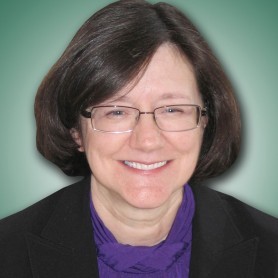Space Environments and Effects
Please register to receive the link to the event.
Advances in integrated-circuit design and technology offer capabilities for space systems that could not be imagined when humans first began exploring outer space. However, the use of advanced technologies in space requires careful assessment of the space environment and mitigation of space environment effects. The space radiation environment and its solar induced changes interact with spacecraft and instrument components and cause observable effects that can be temporary or permanent. Often spacecraft anomalies are caused by these radiation-induced effects, causing loss of data, degradation of capability, service outages, and, in extreme cases, the loss of spacecraft. The effects are usually classified into three categories: total ionizing dose damage that accumulates over a period of time, accumulated damage from atoms being displaced from the material lattice structure, and single event effects that occur as a result of charge being generated along the path of a primary or secondary ionizing particle, collected on circuit nodes, and disrupting (at least temporarily) normal circuit response.
Date and Time
Location
Hosts
Registration
-
 Add Event to Calendar
Add Event to Calendar
Speakers
 Dr. Janet Barth
Dr. Janet Barth
Space Environments and Effects
Abstract
Advances in integrated-circuit design and technology offer capabilities for space systems that could not be imagined when humans first began exploring outer space. However, the use of advanced technologies in space requires careful assessment of the space environment and mitigation of space environment effects. The space radiation environment and its solar induced changes interact with spacecraft and instrument components and cause observable effects that can be temporary or permanent. Often spacecraft anomalies are caused by these radiation-induced effects, causing loss of data, degradation of capability, service outages, and, in extreme cases, the loss of spacecraft. The effects are usually classified into three categories: total ionizing dose damage that accumulates over a period of time, accumulated damage from atoms being displaced from the material lattice structure, and single event effects that occur as a result of charge being generated along the path of a primary or secondary ionizing particle, collected on circuit nodes, and disrupting (at least temporarily) normal circuit response.
Biography:
Janet L. Barth is retired from NASA’s Goddard Space Flight Center (GSFC). At her retirement she served as the Chief of the Electrical Engineering Division (EED) at GSFC where she was responsible for the delivery of spacecraft and instrument avionics to several of NASA’s science missions, including, the Solar Dynamics Observatory, the SWIFT Burst Alert Telescope, the Lunar Reconnaissance Orbiter, the Global Precipitation Measurement mission, the Magnetospheric Multiscale Mission, and the James Webb Space Telescope. She also oversaw development of microwave and optical communications systems and suborbital avionics systems at the Wallops Flight Facility. She was a member of the team that developed NASA’s systems engineering approach to radiation hardness assurance for emerging technologies. Starting in 1999, she worked on the development of NASA’s Living With a Star (LWS) Program as a member of the science pre-formulation/proposal team and the LWS Program Science Architecture Team. In 2001 she was selected as the Project Manager for the LWS’s Space Environment Testbed and in 2002 to 2008, she was a branch manager in the EED.
Barth is a Fellow of the Institute of Electrical and Electronics Engineers (IEEE), was the President of IEEE’s Nuclear and Plasma Sciences Society (NPSS) from 2013-2014 and currently serves as the Past-chair of the Society’s Radiation Effects Steering Group. In 2014 she was presented with the IEEE/NPSS Radiation Effects Award and the NPSS Shea Award in 2022. She is actively involved with the IEEE Nuclear and Radiation Effects Conference (NSREC); teaching the Short Course in 1997 and serving as the Guest Editor of the Transactions on Nuclear Science from 1998-2000, the Technical Program Chairwoman in 2001, and the General Conference Chairwoman in 2006. She is a regular participant in the European Radiation and its Effects on Components and Systems (RADECS) Conference.
Email:
Address:United States
Agenda
6:30-6:35 : Introduction
6:35-7:25 : Technical Talk
7:35- : Q&A
